Bonus for tea plantation workers still remains one of the contentious issues plaguing the tea industry in Bengal. Every year just before the festive season, lakhs of workers denied most of the facilities under Plantation Act, are apprehensive about the quantum of bonus the union leaders and owners will announce. Rupam Deb writes for GroundXero on the past and present struggle for bonus by the tea garden workers in North Bengal.
On 23 September, 138 persons comprising of central and local tea garden union leaders belonging to 36 labour organisations and 39 persons representing the tea garden owners, sat together to discuss and decide the bonus for tea workers in Terai and Dooars region in North Bengal for 2018. A bonus at the rate of 19.5 % was declared which was slightly lower than 19.75% given last year in 2017.
On 3rd October, in a separate meeting in Kolkata held in the presence of government officials, Duncans signed an agreement with labour organisations to give a bonus of 9.5%. The gardens coming under this agreement are Kilkot, Nagaishwari, Bagrakot, Birpara, Gangaram and Dhumchipara.
In 2017, there was a bandh in Darjeeling hills stretching over 104 days for the demand of a separate state of Gorkhaland. As a result of this, production in 87 tea estates in the hills was disrupted. There were a lot of apprehensions among the workers regarding what the bonus this year would be in the tea gardens of the hills. On 5th October, Gorkha Jana Mukti Morcha’s trade union DTDPLU accepted a bonus of 15% for gardens in the hills after a two-day long discussion. However, leaders belonging to GNLF’s Himalayan Plantation Workers Union and CPRM’s Darjeeling Terai Dooars Plantation Labour Union didn’t accept this agreement and quit from the Joint Forum (a platform formed in 2014 comprising of about 24 different labour organisations mainly to fight for minimum wages in the tea gardens of North Bengal.) which was spearheading the bonus negotiation.
After counting the 104-day bandh period as “absence”, the bonus given to garden workers will be a little above Rs. 4000 in the hills and approximately Rs. 8000 for workers of tea gardens in Dooars and Terai region . The tea garden workers in the hills were deprived despite the fact that the Darjeeling tea fetches far higher price in both the international and domestic market.
Manikumar Darnal, a labour leader from Dooars, states: “Since the established practice among the plantation owners is to not provide anything stated in the 1951 Plantation Act, it is only natural that we demand the maximum amount of bonus from the owners, which we do.” Another leader from the hills, Sunil Rai, says, “Anticipating that the bonus for the workers would be decreased due to the 104-day long bandh, we had demanded a bonus of 20%. But under the leadership of the Morcha’s workers’ union, an agreement accepting a 15% bonus was signed.”
The 1965 Bonus Act was a path breaking achievement of the labour movement in India. According to the Bonus Act, workers are eligible to get anywhere between 8.33 to 20% in bonus subject to the revenue earned the industry in the previous year. A bonus of above 20% can also be awarded, which is termed Ex-Gratia.
Workers have been claiming a fair share from the profits earned by industry owners before independence. In India, workers in the jute and coal industry have also rallied behind the demand of bonus. The movement for bonus to workers was led by left trade unions and the tea workers took a leading part throughout the movement. When labour leader Ratanlal Brahman contested elections in 1945, one of the major issues raised by him was payment of bonus to tea garden workers. A sudden spurt in the prices of tea in 1954 had ensured huge profits for the planters. The unions therefore demanded for the workers, a rightful share in the profits, in the form of bonus. A demand for bonus was also raised in the 1955 movement in Margaret’s Hope Tea Estate.
In August 1955, the workers union issued a strike notice to the Tea estate owners on the demand for bonus. Conciliation proceedings initiated by the West Bengal government failed to bring about a settlement. A month later the workers struck work. During this time the Industrial Committee on Plantation was in session in Delhi in which the labour leaders and the employers were discussing the bonus issue. The strike was a weapon to coerce the government and the employers who had already taken a hard line on the bonus question. The trade unions were adamant that neither the union government nor the ICP would be able to persuade them from giving up their bonus demand.
In the past, companies would send their balance sheets directly to labour organisations. Labour leaders would meticulously go through the balance sheet and then hold a discussion to decide what the bonus should be. Any irregularities in the balance sheet would then reach the workers, regardless of any objections from plantation owners about sharing such information.
The total period of the strike was eighteen days. All gardens did not participate during the entire period. The state government took a stern view of the strike and directed the police to arrest the labour leaders. However, in spite of these arrests, the workers continued their struggle. The chairman of the ICP assured the labour leaders that the deadlock would be resolved. He directed both sides to come to an agreement within three months or else the case would be referred to the tribunal. The strike was then called off.
The members of the bonus sub-committee of the Industrial Committee on Plantations were summoned to Delhi in the first week of January 1956, to come to a final settlement on this issue. After a three day sitting, when still no settlement was in sight the labour minister and the minister for commerce and industry intervened and laid down a formula for the quantum of bonus for the four years, from 1953 to 1956. According to this formula, the workers got a bonus in excess of what their unions had demanded. The two employer’s associations, ITPA and ITA were annoyed, but they had no alternative but to accept it. The agreement to give a bonus created a history in the plantation industry, for India became the first country to accept the principle of payment of bonus to plantation workers out of profits. (Source: Class formation in the plantation system by Sharit Bhowmik)
Unscientific Method to Determine Bonus: Meeting Held on the Other Side of the River Fearing Worker Agitation
In the past, companies would send their balance sheets directly to labour organisations. Labour leaders would meticulously go through the balance sheet and then hold a discussion to decide what the bonus should be. Any irregularities in the balance sheet would then reach the workers, regardless of any objections from plantation owners about sharing such information. This practice established that workers in any sort of industry had the right to full knowledge of the profits and losses that had been incurred. However, the information was not always without errors. A veteran tea-plantation labour leader who was born and raised in the middle of the movement and was involved in it throughout his life, Tapan Deb narrates a story set in the ‘70s Dooars. An agency house in its balance sheet reported dung manure worth Rs. 20 lakhs being used in the plantation. Back then, a cart full of manure cost a mere 15 rupees. That amount of manure was enough to cover the plantation several times over. On the other hand, some owners declared losses for a particular plantation for 10 years while also simultaneously finding the money to acquire multiple new plantations. The knowledge of the same would also reach the workers. Naturally, several worker unions began raising critical questions regarding these malpractices. In several plantations, it was observed that such malpractices were intentionally done by owners to pay less percentage of bonus to the workers. Around this time, workers began turning up in large numbers for the bonus agreement and there the conflicts between labour leaders and plantation owners intensified. At 4 am in the morning, women workers would arrive at Jalpaiguri carrying their children on their backs. At that time, it would appear as if the city was the domain of tea plantation workers.
Therefore, back in the ’80s, after a few militant incidents of protests by the workers that took place outside the bonus negotiation site, the trade union leaders and plantation owners mutually decided against holding such discussions in the vicinity of the plantation, and shifted the location for the yearly discussion on bonuses to Kolkata.
We will narrate here two such incidents. The first of these incidents happened at Jalpaiguri’s Labour Office, popularly known as the Kathalguri building. It was 7 days before the Durga Pujas. The bonus for several tea plantations associated with Indian Tea Planters Association (ITPA) had not been decided till then that year. Jalpaiguri’s Assistant Labour Commissioner (ALC) Ramkrishna Saha sat with ITPA labour adviserAdhir Ranjan Sarkar and labour leaders L.M Pradhan, Gopal Maitra and others to finalise the bonus. It was late in the evening but still the meeting showed no signs of concluding. Adhir Ranjan Sarkar stated in clear terms, “Because of low production and low market prices for the yield, we will be unable to pay anything more than 8.33%.”
Hearing this, a group of workers waiting outside the office became agitated. Hundreds of workers have assembled outside the building. Some of them were armed with swords, spears, etc. “We demand a 20% bonus”, “We will cut down Adhir Ranjan Sarkar” were some of the slogans being raised by enraged workers. Someone from the office proclaimed, “Naxals too are among the workers”.
Asking petrified Mr. Adhir to hide behind the door, Mr. Ramkrishna himself went out to pacify the workers. The workers angrily told him, “Last year, the production was 3.5 lakhs kg. This time, it is 5 lakhs kg. There is not even 100 grams of tea that has been left behind in the factories. Then how can it be claimed that the plantations have been incurring losses?” Labour leader Gopal Maitra too came outside too talk to the workers. A few moments later, he was nowhere to be seen. The other leaders began to speculate that he had been kidnapped by the agitating workers. Some leaders heard news of a major meeting underway in ITPA’s head office. Many headed there to look for the missing Gopal Maitra. On reaching there, they received quite a shock. More than around 500 workers had assembled before the bridge over the Karla river next to ITPA’s head office. Workers from Naxalite, RCP and Congress groups had all come together. The mood was militant. The workers were chanting “Inquilab Zindabad” and shouting in unison that “The union leaders – politicians and labour officials are all thieves”, on a small microphone. Mr Gopal Maitra has went there to pacify those workers. But he was chased by the angry mob of workers. Somehow he was rescued and the leaders hid him in ITPA’s office. While Mr. Adhir hid in an upstair room in the labour office.
The second incident revolves around a bonus meeting for Duncans. The site was the same: the Jalpaiguri labour office. A representative of Duncans, D Atal, clad in white trousers and a red shirt had arrived from Kolkata. By no means would he agree to a bonus above 8.33%. The workers came to know about this. Nepali and tribal workers from Hantapara, Dhumchipara and other Duncans plantations were quite aggrieved at this. “Get hold of Mr. Atal”, “We must be given a 20% bonus” were the slogans raised after the workers blocked the outer gates of the labour office. They made it quite clear that Mr. Atal would not be allowed to leave. As it grew late, the union leaders understood that they could in no way pacify the agitated workers. Seeing no other way, the union leaders and labour officials disguised Mr. Atal by taking off his red shirt and making him wear a turban. He then escaped through the back door.
Back in the ’80s, after a few militant incidents of protests by the workers that took place outside the bonus negotiation site, the trade union leaders and plantation owners mutually decided against holding such discussions in the vicinity of the plantation, and shifted the location for the yearly discussion on bonuses to Kolkata.
These and other such incidents made the owners and union leaders fearful of the workers’ wrath. To avoid such collective assertion of workers and any untoward incidents the meeting for bonus was shifted to Kolkata. The arguments given in favour of holding meetings (to decide bonuses) in Kolkata, such as easier access to representatives of the management etc, are not convincing, and it is quite obvious that it was done only to prevent the workers from getting any knowledge about the course of the discussion and prevent them from taking any direct action. Now since the bonus is announced from Kolkata, the trade union leaders and owners has no fear of getting gheraoed by the dissatisfied workers.
Coming back to the present situation, the last date for the payment of bonus for 2018 was 6th October. However, it has been observed that several workers have been raising questions regarding the reasons behind decline in the awarded bonus. In the Samsingh plantation, workers are unwilling to accept the proposed bonus of 17.5%. Citing worker discontent, the plantation owners have fled the plantation. In Totapara and Sarugaon plantations, the workers did not accept the offers of 13% and 14% bonus respectively. According to them, “we are unaware of who gave consent from Kolkata.” This is a regular occurrence. In the Sarugaon plantation, even though a bonus of 13.75% in the first installment and 4% in the second installment had been agreed upon in Kolkata in 2017, the workers are yet to receive the second installment of their bonuses. In Chamurchi Tea Garden the stalemate continues despite a tripartite meeting at Labour Commissioner’s office. The owners are willing to pay only 14.25% bonus and that too in two installments. The first installment will be paid now and the second during Holi. Further the owners proposed to deduct the money they claim they paid to the workers on account of ‘100 days work’ from bonus amount. The workers have refused to accept this.
Plantation owners frequently attempt to pay less percentage of bonus by citing low prices for the tea in auctions. It is well known that tea is being sold in the open market without any accounts of the sales being produced. Even the Tea Board is aware of all such transactions. Labour leaders are complicit in this, as they never oppose such corrupt practices. The practice of making balance sheets available to the workers was abolished in the ‘80s itself. All the owners do now is falsely declare losses and announce low rate of bonus. The only challenge to their lies comes from the workers. But all anti-worker agreements are signed in air-conditioned rooms in Kolkata, far away from the gardens and plantation workers.
Civil Society and Plantation Workers
The festival season is on. Still there are some gardens where bonus negotiations are yet to be completed. The Durga Puja bonus awarded to tea plantation workers provides a healthy boost to the economy of North Bengal. Naturally, tea plantation workers are not the only stakeholders of the movement for better bonuses. But like every other time, urban civil society in North Bengal has failed to express solidarity with the workers. What is most surprising is the reaction of the middle classes from the hill region. The call for a separate state of Gorkhaland within Indian Union is a democratic demand. The prolonged bandh for the cause Gorkhaland in 2017 was positively responded to by the plantation workers. Despite facing great hardships, the plantation workers did not turn their backs on the movement. But now when the owners have snatched away the bonuses that the workers were entitled to citing the bandh as the reason, very few people or organisations in the hills stood in support of the workers. It is as if this issue pertains only to the workers unions. It is quite disheartening that the owners are more aware than the civil society, of the fact that workers pose a legitimate challenge to their authority and possess the power to break the status quo.
The author is a freelance journalist and social activist based in Siliguri.

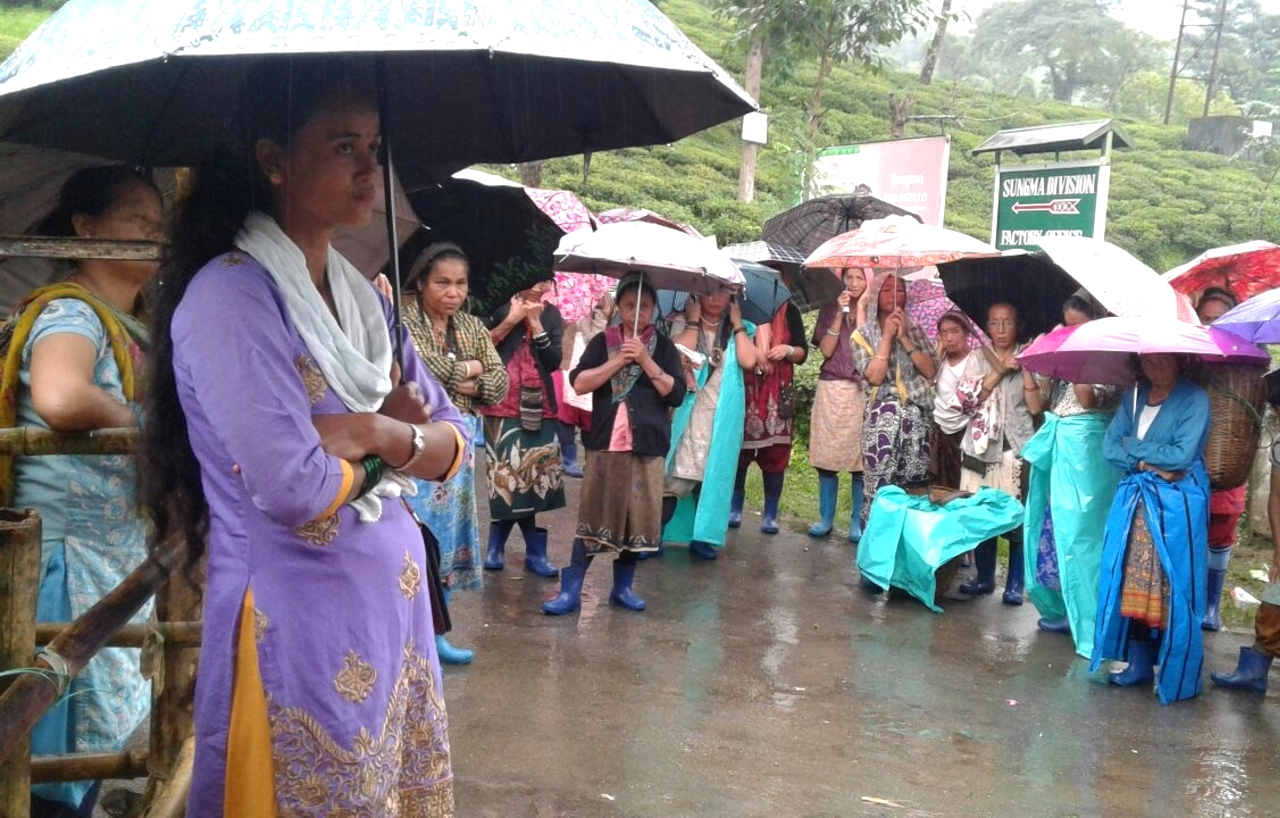
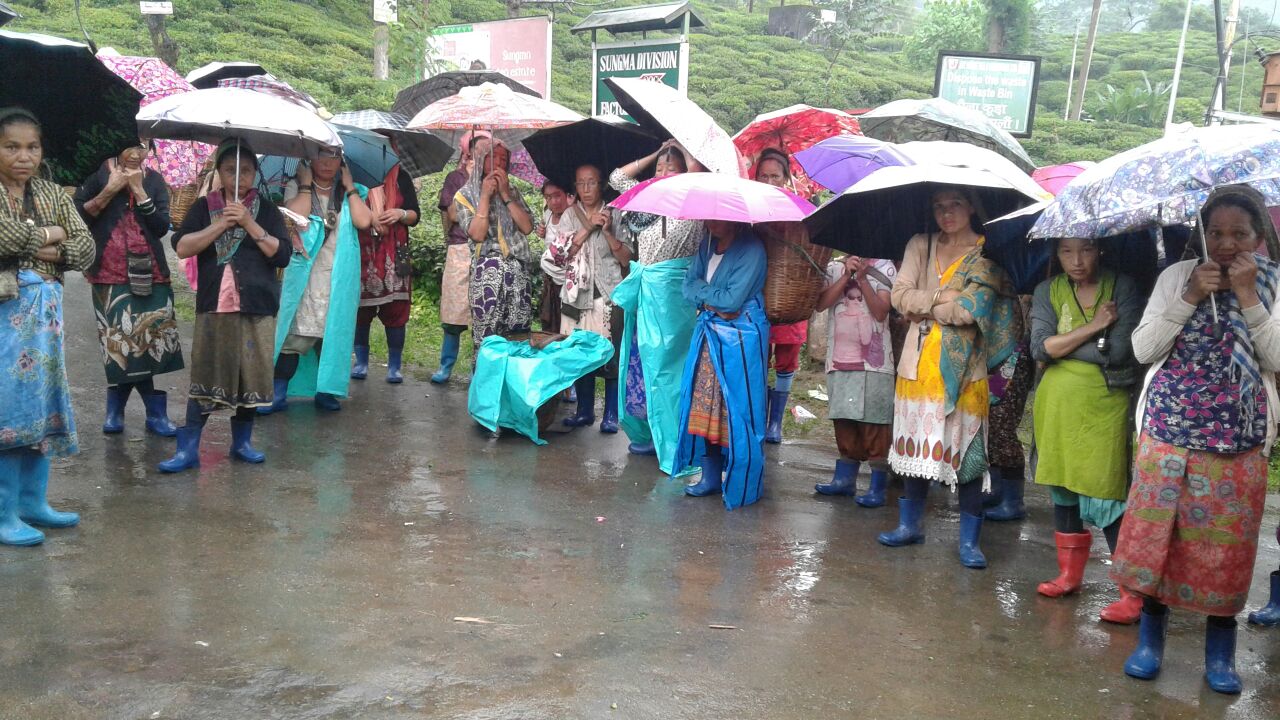
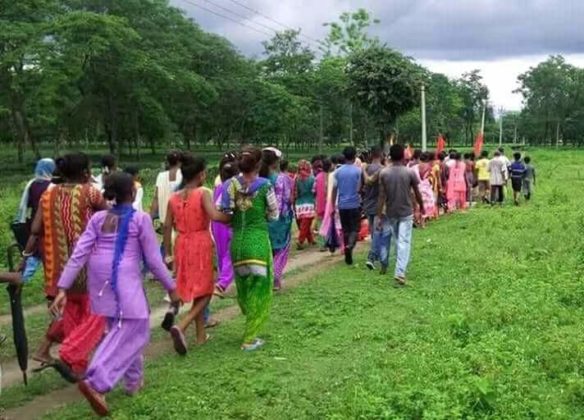
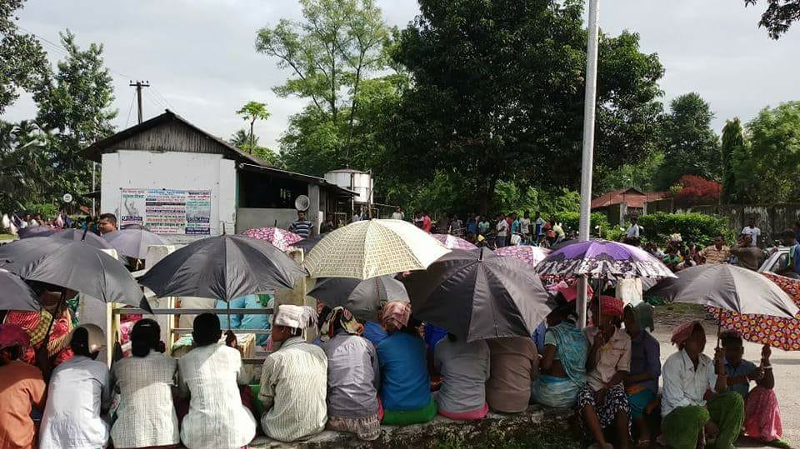
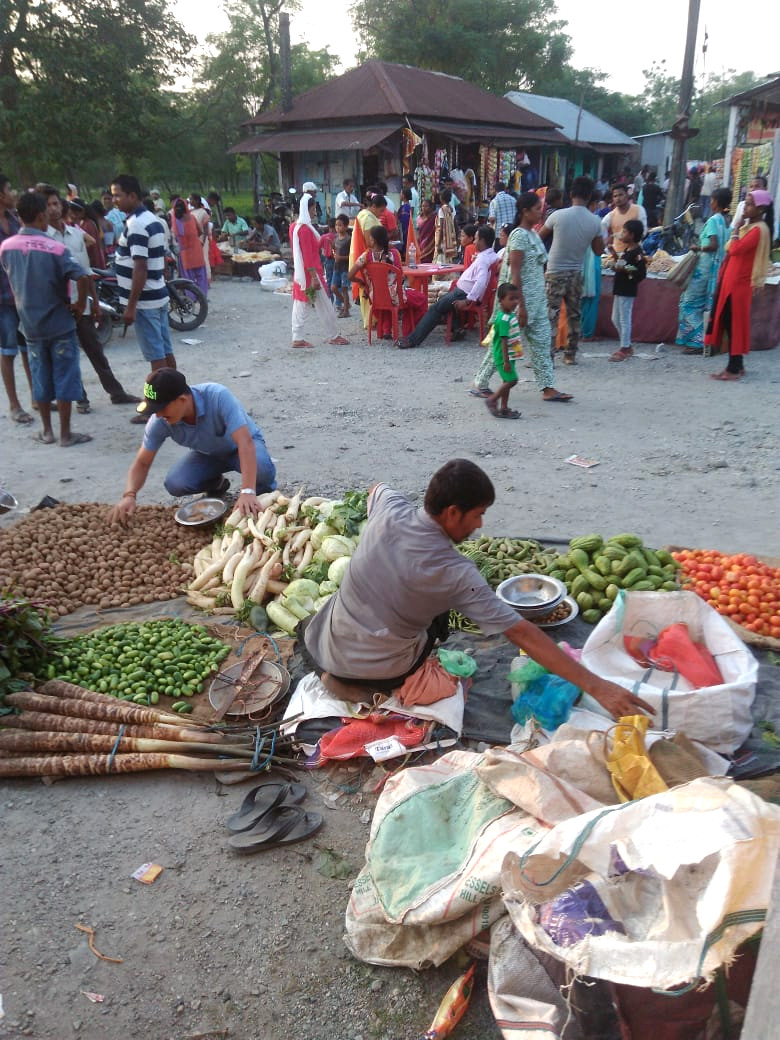

Thank you for this detailed story on tea workers’ struggles. It ably reports both the current and historical status of the demand for bonus and the means for achieving it. The mainstream media systematically blacks out all news of labour rights and trade union struggles, so such pieces are valuable. The conflict between worker expectations and needs and the union leaders and companies attitudes reveals one major reason for the decline of the labour movement.